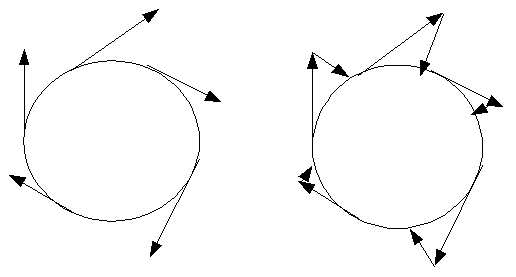Newton's First Law states: A body continues in a state of uniform motion unless acted on by an external force. At any point on the circle below, at any point the moving body will seek to move in a tangent. To keep it moving in a circle a force must act so that the direction of motion is constantly changing

As shown on the right hand diagram, as the the particle moves around the circle it must be making constant changes to it's velocity, always towards the centre. This means that it is always accelerating towards the centre, and implies from Newton's Second Law, F=ma, that it is accelerating towards the centre constantly. The force could be a tension, gravity, some reaction force, an electric force or some other force.

For a planet moving in a circle around a star the speed is always the same. Generally planets move in ellipses. At any point on its orbit the planet has two types of energy: kinetic energy and potential energy.
When the planet is closest to the star most of it's energy is kinetic energy because it is moving faster there. As it moves on its orbit and becomes more distant from the star some of this kinetic energy is changed into gravitational potential energy and the star moves slower. When the planet is on the right in the diagram above it is moving slowest, and it's energy is mostly gravitational potential energy.
